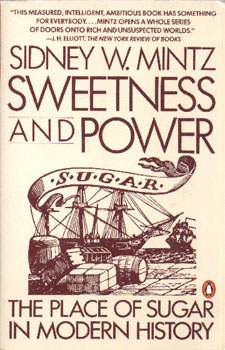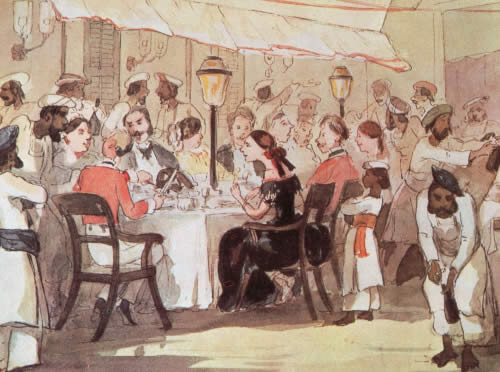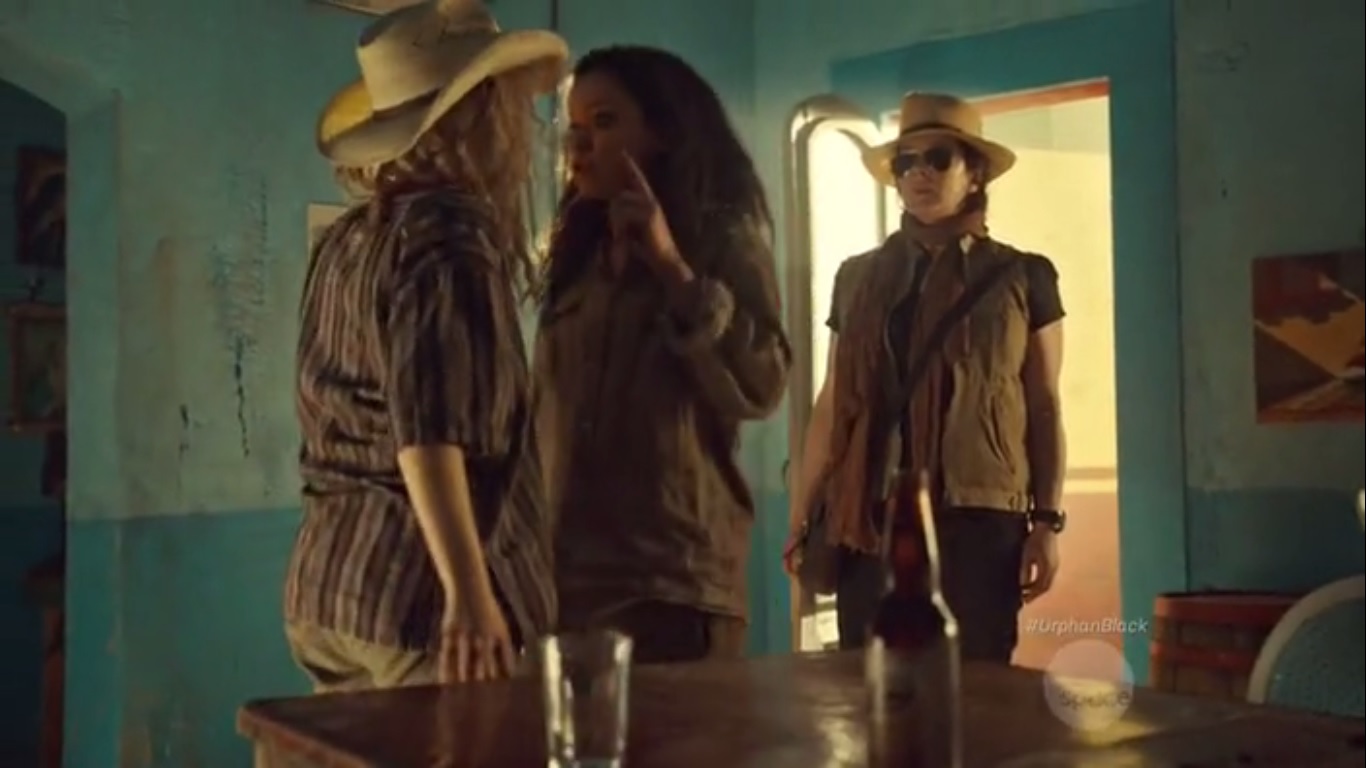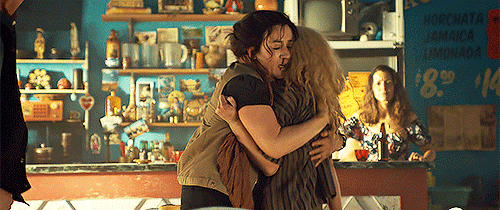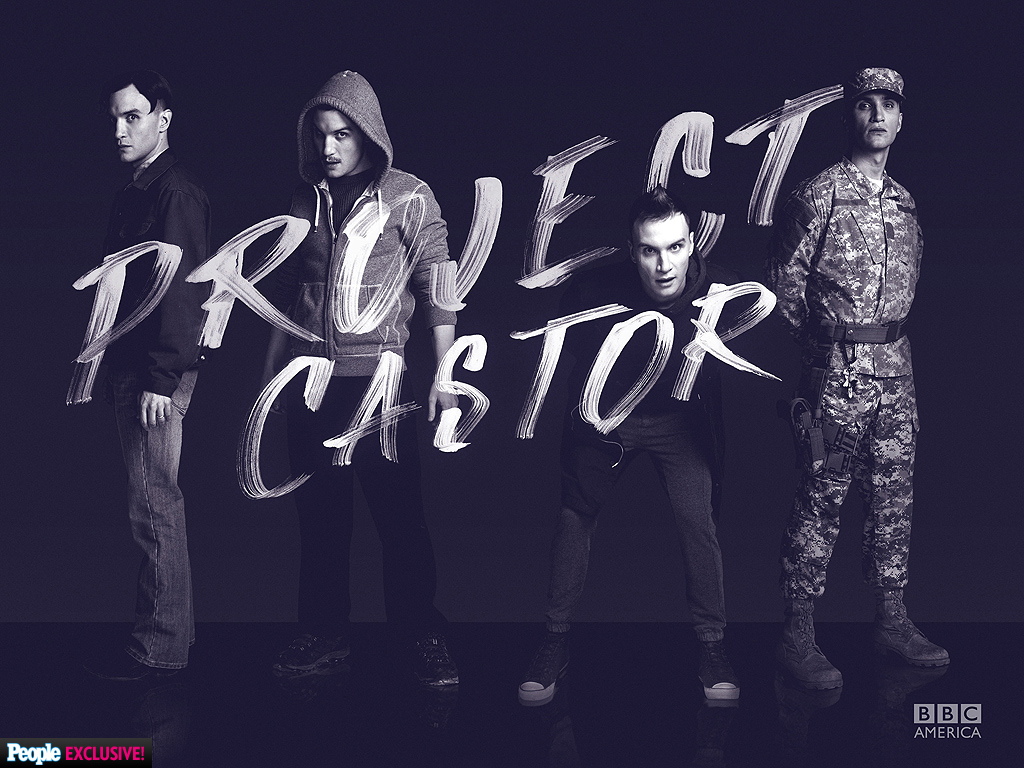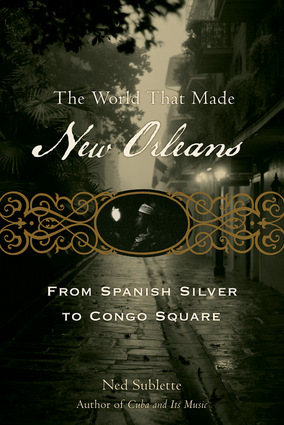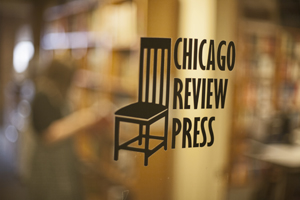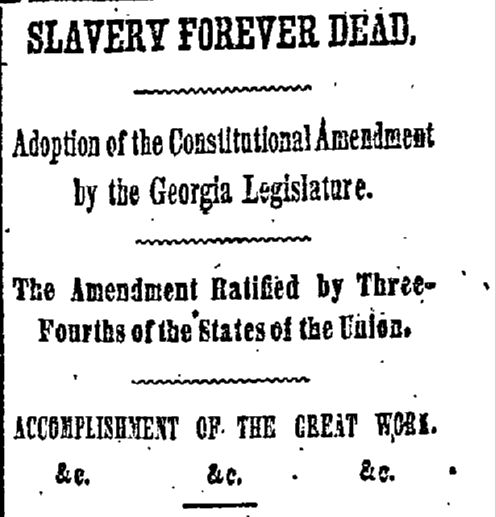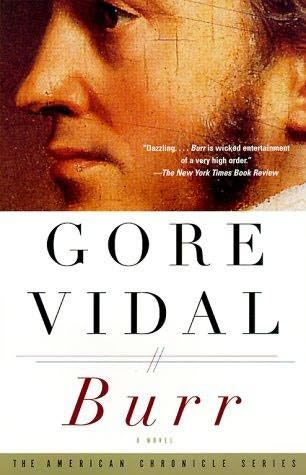NO SPOILERS
Here's a response from Elsewhere to the business of
Orphan Black that I also posted here:
At Elsewhere an amigo commented:
Having watched the whole season, this episode is the one I shall nominate for next year's Hugo awards.
For me, the adding of the Castors adds to the depth of the stories & also provides a contrast. The creators of Orphan Black aren't afraid to keep extending themselves by adding more elements. One thing that seems apparent to me is that despite having the male clones, it's still very much told from the PoV of the the sisters.
To which I responded after watching the final two episodes too:
I hear what you're saying here.
However, from a writer's standpoint --
and a critical viewer / reader's standpoint -- merely adding more elements, unless they are fully integrated in the arc, or at least the seasonal arc in which they appear, drives an extended work off the cliff. This unintegrated element compromises the structural integrity of an espisode, a season, a series.
In print fantasy (e-book or paper) we're often encountering writers who cannot resist behaving like gaming writers, where story structure and integrity don't necessarily matter, and certainly not as much as the conflict and their levels. Character after character, culture after culture, place after place, and everything else that catches their magpie attention, without considering what this means to the structural coherence of the entire endeavor, or even the rhythm and pacing.
There has to be a consciously understood endgame in mind for these additions, particularly for television, which is done by several people in a single room. Think of how many series have gone off the rail this way, in terms of satisfactory narrative arc and plot.
The Good Wife is one of these.
Battlestar G was another -- which happened at the point where it got particular about women as actors and agency. The show went for rape, made the biggest baddie a woman, and refused to allow the female pilots, who were as perfectly qualified as any, to perform the rescue. The show never got back its footing after that, because it couldn't even imagine women as the Heroes for the oldest trope in screen action, saving the damsel in distress.
In fantasy, as a single example, there's Pullman's
Dark Materials. As soon as the boy showed up, Lyra became secondary, in her own story! But he was the male, he had the knife.
This is why
Buffy remains the outlier and exception despite the hundreds -- thousands? -- of supernatural/sf/f series since. The core always remains, is always central, and the lodestone is always Buffy. No matter who comes and who goes, ultimately it's she who is driving all their action and reactions. In each season she needs to learn more about herself in order to have any chance at all to save the world again.
But this constant addition of more and more of the same is a very dangerous path to take, structurally speaking, as dangerous on screen as it is on the page.
So I have concerns about the boy clones -- especially as their great danger is to their brains, while for the women, it's about their reproductive capacities. Right there we've hit a very dangerous gender expectation, an all too unexamined, presumed gendered assumption -- that a man's center is governed by his brain and a woman's by her uterus. That women have uterii [?] and what this has meant for women throughout history in which so much of the time they are entirely governed by men, and that this is considered right and proper because they have a uteruses, and their reproductive capacity is men's right to harness for their own profit in any way they deem right -- this is what the show was about. And its essential.
I've spent going on 6 years now on this very subject in a racial and historical context. That's not to say that I am particularly qualified to speak to this, but that this subject is so vast and so integral to everything from the development of a capitalist society to legal identity, that one can easily spend 6 years researching and writing just a single aspect of it!
On the other hand, speaking specifically to
Orphan Black, there is this consideration.
The traditional trope for adventuring children, and particularly adventuring females, is the dearth of family. This is how it is possible for a female adventurer to exist, because she has no family ties, no family support, due to bad luck (poverty and illness) or because a Big Bad destroyed her family -- and maybe even raped her, leaving her for dead. Then she's got the overwhelming drive to avenge these crimes to justify her adventuring. At least with European and U.S. historical - cultural traditions this is so, particularly when it comes to popular entertainments with an adventure slant.
So often within these entertainments too, when it comes to the USian Romantic Individual Hero, he too is a solitary, without family ties or even back story. He just is, like
The Man With No Name.* Though often lazy writers motivate the fellow with a dead wife/lover/family, who are then never again mentioned, but do for justifying his violence -- he, sensitive fellow, has been hurt and must fix the hurt by killing.
Spoiler Alert -----
Regarding
Orphan Black, the addition of Mrs. S's own mother to the cast, has revealed a solid platform for "The Original" for all the clones' genome -- as well as adding to the family. Which was appropriate for this season 3, which kept hitting us over the head with the information that this season is about FAMILY!
It also is fairly clear that exceptionally gifted or not, in the variety of ways these clones are, motherhood still creates all these dilemmas for adventuring and fighting, that can only be dealt with by sending away / hiding the child, i.e. separation from the mother-daughter bond. So much of what Sarah does could not be done with her daughter on hand, even if her daughter wasn't one of the prizes all the big bads salivate to control and possess. And Sarah's daughter Kira, is always a lever against Sarah, thus the big bads want Kira too, beyond even what they could harvest from her genetics -- and whatever powers of prescience she seems to possess.
So it's hiding the child or doing what what Mrs. S did: gather her chicks, run like hell away and hide. But They always find you again, it seems. But then, that's story telling, yes? One's good deeds as much as one's sins return to haunt you. Look at Mrs. S's own mum.
Lovely show, but I do not like the boy clones -- they are a distraction, particularly as they have their own Mother, the dark reflection of Mrs. S. Recall what was remarked above about adding to add and the detrimental effect on structure and also on pacing and rhythm. As in fantasy, if there's a magical flying creature, do not have a second, different magical flying creature. It's clunky composition.
The response, then to the above is this:
Thanks for your crunchy response which contains much intriguing stuff to consider.
I hadn't considered the female/reproduction: male/intellection contrast, which when you pointed it out made me facepalm: how did I not see it before?
I'd been thinking more about how the brain defect causes loss of identity before eventually, death, which is also a powerful element, identity being a major theme of Orphan Black. (Personally, I'd rather lose my ability to reproduce than my sense of self.)
I don't know if the creators have an endpoint in mind, I hope they do and they don't screw up the ending. It's definitely a challenge when creating an episodic work; you can't go back and change earlier episodes because they're already out there, part of canon.
The Crystal question is an interesting one too because you could argue that they are protecting their sister be leaving her out of the circle, though that may change in coming episodes. Knowing one is a clone comes with a cost.
Thank you for thinking this is "crunchy."
We miss this stuff all the time -- f=heart/uterus/feeling and the undifferentiated primative, while it's male=head/brain/intelligence/rationality/meaning and significance -- or, as you have noticed, Real Identity, unlike the heart/uterus -- which is just icky non-rational, non-creative >!< blobness -- which justifies any kind of exploitation for the benefit of the real people, men, particularly wealthy men.
It's interesting here, to think of Buffy and her family, particularly her relationship with her own mother, Joyce, and then with Dawn, for whom Buffy will sacrifice anything -- Dawn's her sister, but she feels for her like a mother much of the time.
This business of the clone club and sisters, particularly as it is expressed via Helena, who, with Sarah, is the only one of them who can have babies -- gets more interesting all the time. Even though I do fear the
writers fear exploring these gendered matters very deeply,
Orphan Black is vastly superior to, say the over-hyped Jessica Jones, which concentrated entirely upon abuse and victimization. The
Orphan Black women are very different, including those, like Mrs. S, who are not clones.
All this is in such contrast with
Jessica Jones, maybe the most over-hyped series in a year of a large number of over-hyping series.
Jessica Jones is part of a bloated bunch of comic franchises. As such, like all its siblings, JJ's rhythm is that of thud.
Orphan Black is an original, which by the grace of its actors and writers, can handle a variety of rhythms and to. Even the solo star turns reference those of the other characters, particularly the primary Clone Clubbers (the club references and locations thus have an authentic purpose among OP's many other spaces).
Some have criticized Helena's character as a cartoon -- because, she isn't evidencing enough suffering from her abuse.
If one isn't seeing Helena's actions partly in light of what she's suffered, one is looking rather blindly, one might think, yes? Why is she so obsessed with the entire concept of sisters and babies?
Moreover, as with episode 8 in season three -- much of this is played deliberately as comic relief (see, as in
Hamlet) in contrast with heart wrench betrayal of a non-member of Clone Club that follows. Much of this depends on the impeccable timing the actress and supporting actors possess, along with the writers, to riff off many ancient comic tropes starting with Greek and Roman theater. Also with other of these tropes such as the Mexican cantina, and the entrance of Mrs. S in the best classical grade B western manner, the moment after Helena declares she's going to kill Mrs. S, then their showdown, with Mrs. S's secret superweapon -- love. It's a brilliant episode that rings so many changes. The plodding JJ, mired in superhero graphix/comix tropelandia, was incapable to getting anywhere near this snap crackle and pop in any episode.
This sort of episode was present in
OB from the first season. These scenes in which the writers and actors -- and audience -- can relax from threat for a few beats are essential, otherwise the very weight of what they are all up against is too heavy for the show to dance -- and then it would be just another comix franchise thudder. There is more than enough authentic suspense and fear for our characters in peril provoked in us, the audience.
This is something that
Buffy did so well as well.
Morevoer this broad comedy is consistently anchored by Alison and her suburban milieu (which works beautifully to be played for laughs, even though the laughs remind us of the gravity of what's at stake -- even, for pete's sake exploring how a marriage can derail and yet be saved, and even become stronger and better than anyone previously could have imagined -- this stuff really happens!). This is also the case to a lesser degree with Helena, within different contexts.
Dancing and singing along to pop music in a group and as individuals as relaxation, blowing off steam and celebration has also become a continuity marker of group or individual fleeting moments of perfect well-being, as also happens when Helena and Alison's contexts interpenetrate the previous separating boundaries between them. It's beautiful in season 3, seeing Alison and Donny jumping on the bed, playing together with their ill-gotten gains, and later seeing Helena singing and dancing by herself while making soap.
Bringing ng Helena to live with Alison, Donny and their family was a brilliant move. And then -- we get the blood, a la River from
Firefly (another pop culture television reference by the writers who revel in these, and who know their audience) thanks to Helena, who is all about saving the family. For me this stuff is brilliant, and it is executed beat - pace perfect.
To me, the most salient point of difference between
Jessica Jones and
Orphan Black is that
OP explores what one's class background growing up means for each of the characters. They all came up differently, other than Sarah and Fe, who grew up learning street smarts and griftering fairly naturally considering Mrs. S's own capacities in these areas, as well as her skills with violence. Which is why season 3 bringing in Alison's mother and Mrs. S's mother works.
All the women have different gifts, and they are learning to wield them to work for their own futures as autonomous, rather than property.
Whereas,
Jessica Jones is situated within a locus of hopelessness, the sense of no future, that the genuine poor possess, whether they have successful friends and acquaintances or not. Yet here are successful, connected, wealthy friends that make a great deal possible for Jessica that she couldn't do for herself. That's the single part of
JJ that felt right to me, even though geographically the locations, i.e. mise en scèene, are mostly all wrong.
The thing is, that even among the authentically poor, there are moments of happiness and relaxation. Look at the children playing in refugee camps. Thus even Helena is changing, thanks to her sisters. Well, to a degree. Man, that bloody white coat and blood up that dangling machete and up to her elbows -- but if you have a River, its good to have her on your side, yes? :)
---------------------
* This has changed to a degree within genres of all kinds, as writers, producers, publishers desperately seek franchise expansion. Back story! unleashing the plague of prequels upon the land!
